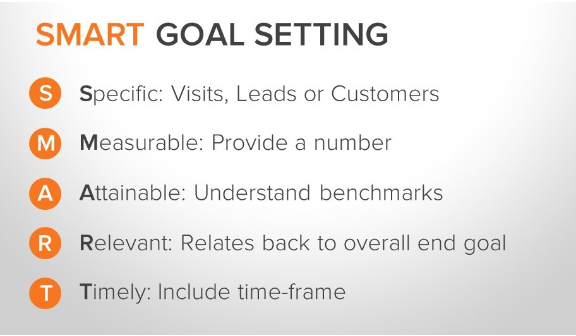People have the funny idea that B2B content marketing is a completely different type of marketing from B2C. They imagine that since you’re marketing to companies that you need an entirely different strategy. After all, a company isn’t the same as a person, right?
Actually, it’s exactly that. Individuals, even if they’re working on behalf of a company, are the ones who consume your marketing materials. B2B marketing isn’t creating for some vague, unknown entity. You’re creating content for people. (That’s why we look at it like P2P —people to people—marketing, not just B2B.)
So, what does this mean for you? People want an emotional connection. They want to feel like your business cares about them and is invested in helping them succeed. To do this, you need to tell a story with your content.
The Psychology of Storytelling
Why is storytelling an effective content marketing strategy? It’s because telling and reading a story actually alters how our brains think and act. In fact, stories are so powerful that we see them in everything and everywhere.
For example, a 1934 study of 34 Massachusetts’ college students found that even the simplest types of content can be transformed into stories. They showed students a short film of two triangles and a circle moving across the scene.

When asked to describe what they saw, all but one individual created an elaborate narrative to describe the actions. They saw everything from the triangles and circle fighting, the circle feeling worried, and the big triangle feeling “rage.”
This concept of turning everything into a story is called pareidolia, and it can be found everywhere. We see shapes in clouds and faces in paint, and it’s because our brains are wired to change uninteresting information into something that has meaning and that we can consume.
The truth is that stories change how brains consume information. During a story, our brains activate the language processing centers, the motor cortex, the sensory cortex, and more. Whatever the story uses, our brain activates, which means we become involved.
Storytelling in Business Marketing
When translating this to a business context, storytelling is how you influence customers. When reading a story, your audience automatically places themselves as the hero or main character. This means that your customer will become the character in your story and thus begin to have similar ideas, thoughts, and emotions as that character.
You can change the way your audience thinks about your brand and even how they behave toward it with the right story. If done correctly, storytelling can be a powerful marketing tool that not only gets a prospect to pay attention, but to engage with your company and take specific actions.
So, how specifically can storytelling impact your company’s bottom line?
Improved Memory:
We can all tell a story that we heard as a kid. It’s why fairytales are such effective teaching tools. Storytelling, even from a business perspective, results in better retention of data. People retain 65% to 70% of what they hear through stories while they only retain 5% to 10% of what they hear through statistics.
Greater Appeal:
Storytelling helps you appeal to your customers both logically and emotionally, which can improve your close rate. People think with both sides of their brains and need that emotional connection to make the leap to a sales.
Visualization:
In a story, you describe how your product or service can be used in a real-life context. This lets your customer imagine what the product looks like in action, so that they can imagine it for themselves.
How to Tell a Story
The question now is, “how do you tell a story in a business context?”
The first step is to develop engaging content ideas around your business topics. You can do this through careful planning.
To get started on a story, there are four questions you need to answer:
1. What is your goal? Make sure that it’s a SMART goal that relates back to your overall business.

2. Who is your audience? Choose a specific buyer persona for the story, so you can personalize it to who they are and where they fit in the sales and marketing funnel. Do your research about who your ideal audience would be.
3. What do you want your audience to feel? Do you want them to feel more connected to your brand or do you want them to feel that their company is missing a vital element to their success? There are many different feelings you can evoke, and they should relate back to your goal.
4. How will you elicit those feelings? For example, you can evoke a sense of urgency by laying out the stakes and a timeline. You can evoke connection by being personable.
Once you answer those questions, it’s time to tell your story. Everyone has a story; you just have to find yours. To effectively tell a story, you’ll need six different elements.
1. Characters
Every story needs a cast of characters. The good stories always have a hero (protagonist) and a villain (antagonist).
- Hero: The hero is the individual who will face and overcome a problem, and this is the individual your customer will relate the most to.
Typically, the main character tends to be an imaginary person who is similar to your buyer persona (the reader), or it could be another customer (like in a case study).
- Villain: This can be a person, but most often, it’s the problem or issue that your hero faces. This is what or who you need to defeat throughout the course of your story.
For example, the hero could be a CTO, and the villain could be cyber criminals trying to breach the network security.
2. Scene
No story is complete without a setting. Nothing happens in a void, and for a customer to be able to place themselves as the hero in your story, they need to be able to imagine themselves in the location where your story takes place. These are the necessary details required to bring your story to life.
In your story, when describing the CTO, you could talk about the type of company he works at. You could mention the boss that is always on top of him to find solutions within a budget, or the understaffed department that brings stress to his life, making it harder to defeat the villain. All these elements of scene bring the story to life.
3. Stakes
No one wants to read a story where nothing happens. There always has to be something at stake. These are the things that your hero has to risk to be successful. The stakes can be both big and small.
For our CTO, the stakes can be the company losing clients following a breach, or even getting shut down, if he can’t find a solution, which your product/service can help him with.
4. Drama
Drama is what brings excitement. These are the details of the plot that make your audience catch their breath and worry about what happens next. Without drama, your readers won’t keep reading.
Maybe, right before he finds a solution, our CTO will get a call from an industry peer describing a breach they just experienced - and the repercussions. Or one of the employees at the company forwards an email that looks like the work of hackers, and he must make sure no one clicks any links in it before it’s too late.
5. Resolution
In the end, what makes storytelling effective for a business is solving the problem. You want your hero to succeed and to use your product/service to overcome the issue that caused him so much trouble and stress.
The way to do this is to always keep the problem and the solution in mind as you’re writing your story and make sure your resolution is realistic.
In our story, we want the CTO to prove to his boss, the stakeholders, and the company at large that he was able to meet and exceed their expectations. Show how your product/service tackled the problems that he was faced with and helped him overcome them all.
6. Conclusion
Finally, you’ll want to wrap the whole story up. This is where you’ll add your call to action and tie up any loose ends. This is also a perfect time to set up an opportunity for a sequel.
For example, the CTO can give a presentation on how your product/service saved the company and all of the benefits they can experience thanks to the solution. You can then finish the story with a call to action encouraging your reader to become the CTO from the story and experience his same success.
Once you have your story, the last step is to get it out to your audience. Make sure you distribute your story across all of your platforms, paying particular attention to the platforms where your target audience spends the most time. Then, all you have to do is sit back, and wait for your story to do its job.
Final words
Storytelling is a great content marketing tactic that is far too often overlooked in B2B organizations. Remember, everyone loves a good story, and you’re marketing to people, not faceless organizations. The more you do to engage their brains in new and exciting ways, the more likely you’ll be to convert your audience into customers.
Just remember, storytelling has to be strategic. There are key elements to every story that you can’t forget if you want it to be effective. You must have characters, a scene, stakes, and drama. Then, you have to wrap it all up with a solid resolution and conclusion that provides a structured end, so your audience ends the story feeling satisfied.
Need help telling a story that will generate leads? Contact KeyScouts today. We will be happy to help.






